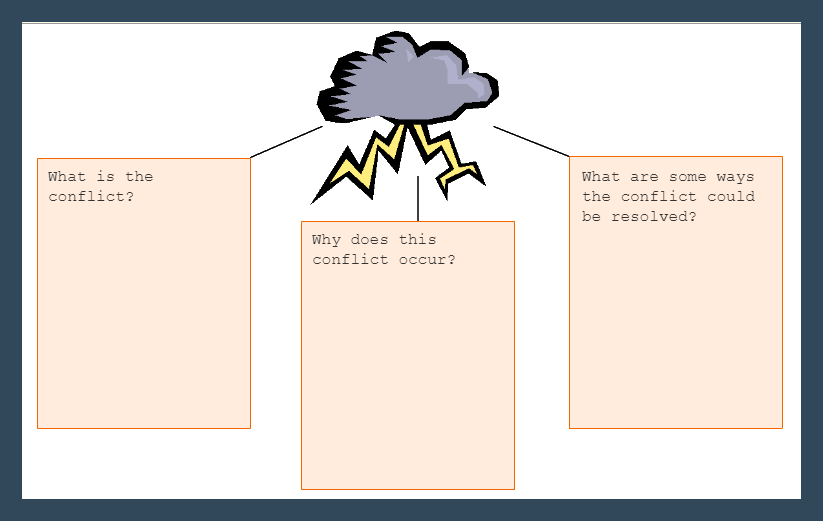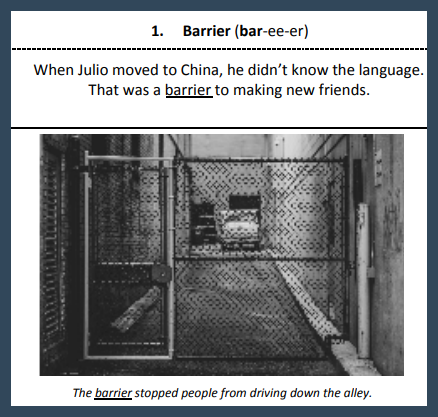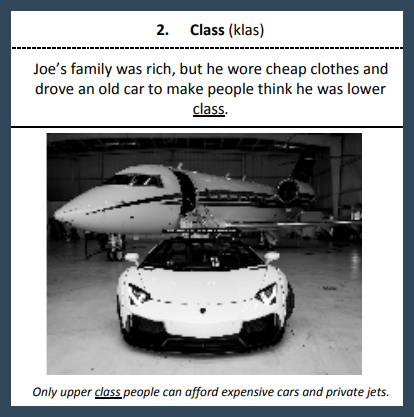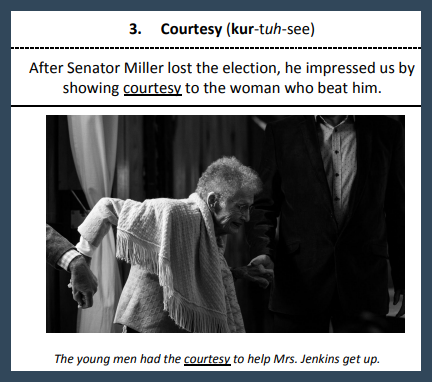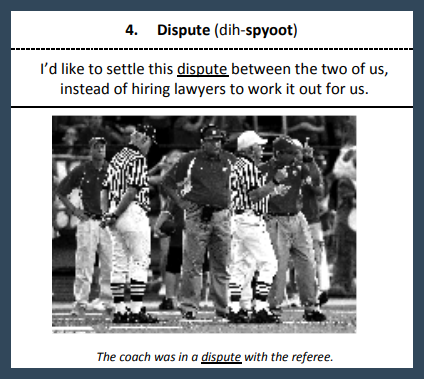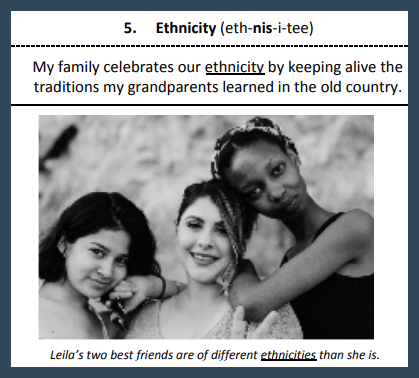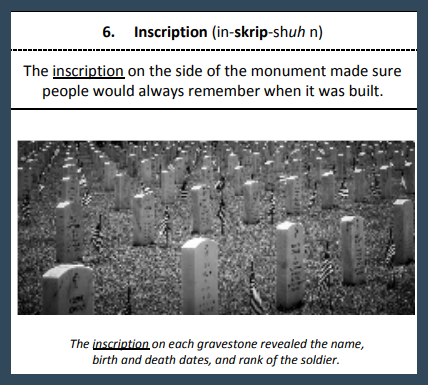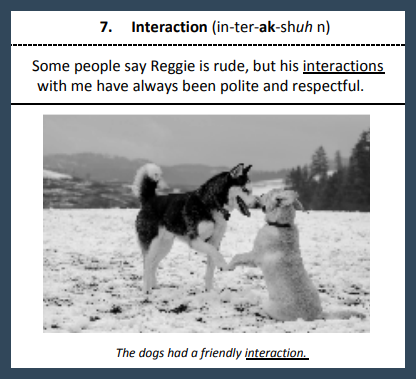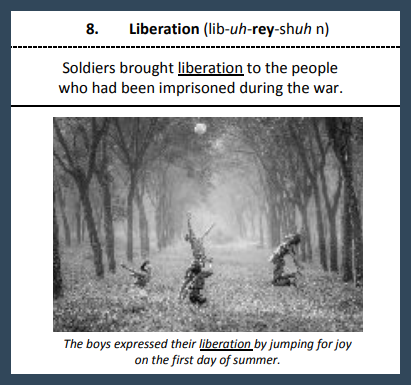
Essential Question: “What does it mean to be an
outsider?”
Unit Overview
In this
unit, you will read the short story “The Stolen Party” that speaks to the
essential question: What does it mean to be an outsider? You will practice
analyzing how authors develop conflict through character interactions. You will
complete a Conflict Map on the short story.
Section A: Vocabulary
Let’s
begin with an activity will you will be using context clues to try and
determine the meaning of each of your new vocabulary words. You will need to predict the purpose of the
vocabulary word in a sentence. Use the following strategies for your
prediction.
· Begin by looking at the photo (What do I see?)
· Look at the caption (What word could I put in
place of the underlined vocabulary word?)
· Look at the example sentence (Do my
substitutions from the caption make sense?)
· Write your prediction of the meaning of the
word
|
What’s
your prediction? |
|
|
What’s
your prediction? |
|
|
What’s
your prediction? |
|
|
What’s
your prediction? |
|
|
What’s
your prediction? |
|
|
What’s
your prediction? |
|
|
What’s
your prediction? |
|
|
What’s
your prediction? |
|
Let’s Practice: Fill in
the Blank Sentence
Directions: Fill in the blanks, using the correct
vocabulary word to complete each sentence.
Sometimes, the best way to understand something
is to understand what not to do or what something isn't. In the same way, an antonym, or an opposite, can convey
meaning. If you point out the
differences, you can come to understand each component better.
Let’s
Practice: Matching Antonyms
Directions:
Match the following vocabulary words.
We have set-up a class on CommonLit for you to
receive the reading passages in multiple formats.
Below is the class code.
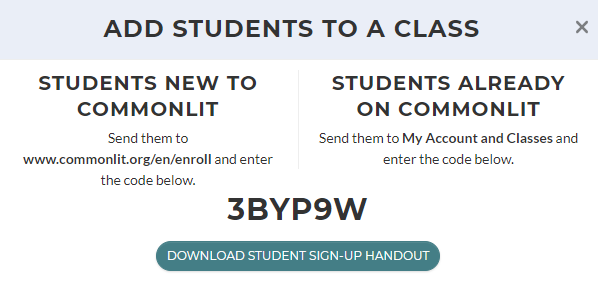
Section B: Conflict (“The Stolen Party”)
Every
story has a conflict. Conflict is
just another word for a problem or dilemma that the character faces, and
usually, the conflict is what drives the plot. It's what makes us want to keep
reading to figure out how that conflict is going to be resolved. There are two
main types of conflict: External and Internal.
· External conflict is when a character struggles
with something outside of themselves
o Person v. person
o Person v. nature
o Person v. society
· Internal conflict is a problem that occurs
within the character themselves
o Person v. self
Let’s Practice: Identify the Conflict
Essential Question: “What does it mean to be an
outsider?”
“The Stolen Party” by Liliana Heker
About the Author: Lilian Heker (b. 1943) is an Argentine author
who has been writing professionally since she was 17. In this short story, a
young girl in Argentina argues with her mother about attending a birthday
party.
Skill Focus: In this lesson, you’ll practice analyzing how character
interactions develop the conflict in a story. This means paying attention to
the dialogue or actions that take place between characters and how they lead to
struggle. As you read, take notes on how different characters view Rosaura’s
attendance at the party.
Read the Text
Let’s Practice: Guided Questions
Directions: Answer the Guided Reading Questions based on
the story “The Stolen Party”.
Section C: Conflict
Map
Conflict in literature is defined as any
struggle between opposing forces. Usually, the main character struggles against
some other authority. This type of conflict is what drives every story. Without it, the story would have no
point or purpose.
You will
complete a Conflict Map based on “The Stolen Party” and the essential question.
1st à What is a conflict?
2nd
à Why does this conflict occur?
3rd
àWhat are some ways the conflict could be
solved?
Below
is a graphic organizer that you can attach to
the last question.
